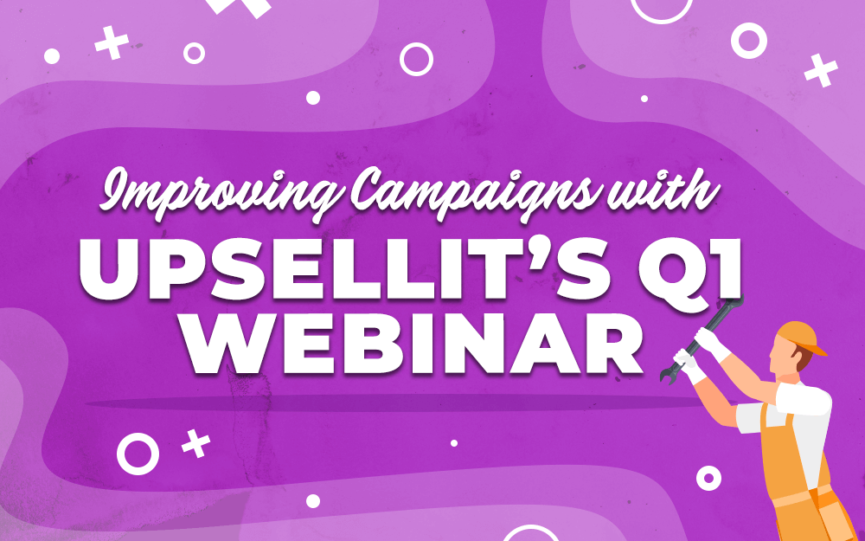In this Q1 holiday overview, Upsellit emphasizes the importance of seasonal marketing in the ever-changing ecommerce space. Among the topics covered are:
-Why seasonal marketing is more relevant than ever
-How seasonal marketing can be used to enhance your campaigns
-Examples of successful seasonal marketing strategies from major brands
Why is Seasonal Marketing Important?
Seasonal marketing ensures that your marketing never becomes stagnant, and instead adjusts cohesively with the rest of the world. It also demonstrates the relevance of your brand and products to an audience that has an immediate need for them.
Well executed seasonal marketing has the power to:
- Ground your marketing in cultural ethos and make your messaging feel like it belongs in the world at large, not just your site.
- Make campaigns more human and relatable, keeping them from seeming robotic.
- Prevent your marketing from seeming out of touch, while showing consumers why your brand and products should be a part of their lives.
New Year’s Resolutions
About 68% of Americans make a resolution every year. Resolutions prompt lifestyle changes, which almost always result in the need for new products.
Research from Quicken finds that the majority of people spend $100-$1000 on their New year’s resolution, with over 10% spending more than $1000. Plus, when you consider how many people make resolutions, the data shows that well over a million people spend $5000 or more on their resolution.
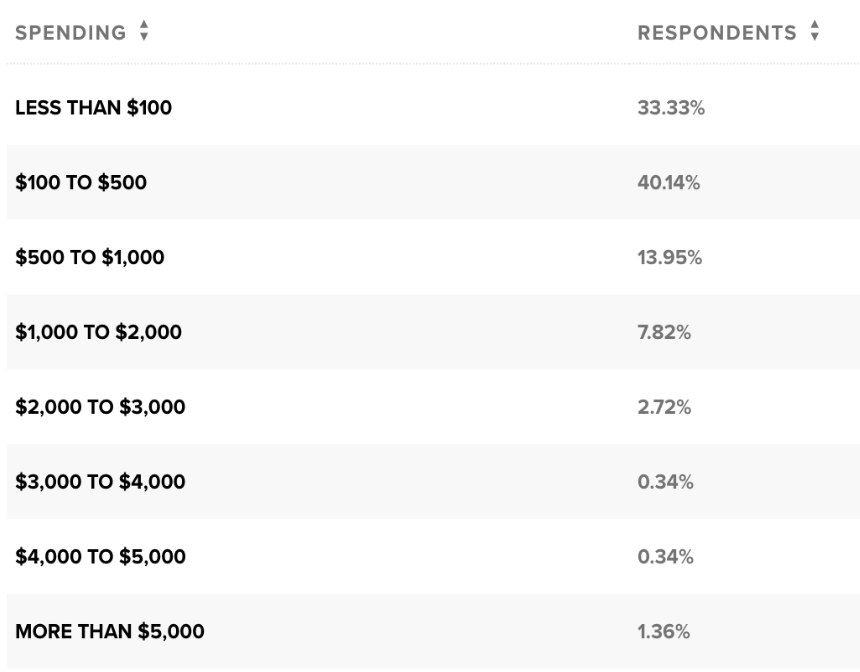
In addition, when you consider how many people make resolutions, the data shows that well over a million people spend $5000 or more on their resolution.
How to Take Action
The space and flexibility of email remarketing make it a great option for communicating your New Year’s message to consumers. It’s especially helpful for putting your brand back on a shopper’s radar after they’ve engaged with you, but haven’t gone “all-in” yet.
In order to appeal to consumers during this time of positive change, we want to focus on crafting a message that speaks to bettering, updating, and refreshing consumers’ lives. It’s important to note that we never want to be critical of a reader’s habits or possessions – we just want to focus on the benefits of making a positive change.
If you sell lifestyle items – clothes, furniture, electronics, to name a few, emphasize the popular idea of “Out with the Old, in with the New,” but add a creative spin. This is a great chance to help them find a new style that lets them put their best foot forward and start the new year off right.
For services, make a point to show the reader exactly what value you’ll provide them in the new year. Demonstrate how your service will help them live a better life.
Finally, let’s say that you sell a luxury good or a more premium product or service. This is a great time to encourage your audience to treat themselves this year. Again, highlight what makes your product better, and how it can enhance someone’s life.
Valentine’s Day
Over the years, Valentine’s Day spending has increased steadily. Today, the holiday currently generates over 20 billion dollars in the U.S. alone. Internationally, Valentine’s spending has increased even more, growing by 49% in just the past 5 years.
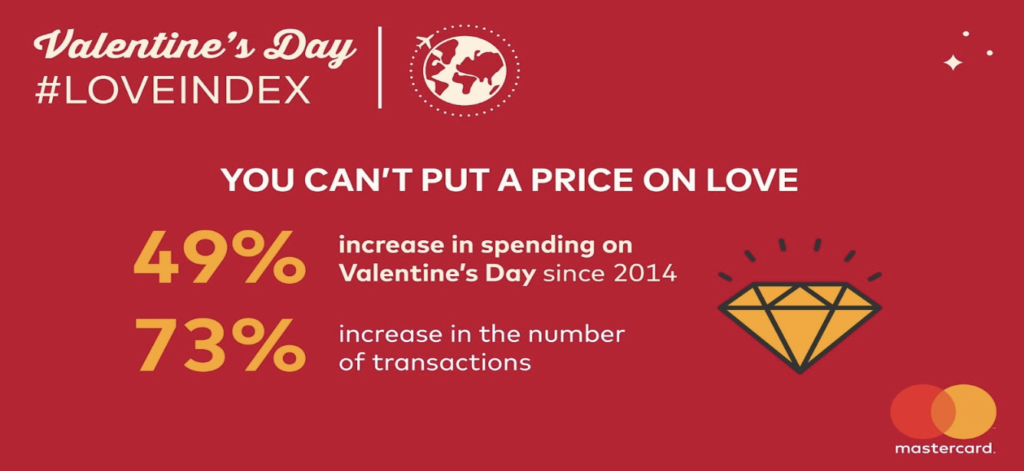
In addition to spending more, shoppers have also adjusted who they buy for. Instead of just spending on a significant other, it’s become increasingly common to spend money on friends, family, pets, and self purchases. In fact, as of 2019, the average single person spends $70 celebrating Valentine’s Day.
Even though most people associate Valentine’s Day with flowers and candy, these purchases only make up ¼ of total spend – which leaves over $15 billion on the table for less traditional gifts, giving many brands a chance to cash in.
How to Take Action
Unlike many other major holidays, very few people buy their valentine’s gifts far in advance. In fact, around 45% of shoppers wait until about 48 hours before the holiday to do their shopping.
This tendency to wait until the last minute means that shoppers are under pressure to buy quickly – creating a phenomenon known as “natural urgency.”
When you combine this pre-existing natural urgency with additional urgency tactics, it increases the power of both strategies to drive consumers towards purchase.
Countdown Timers
You can use a countdown or timer to create a physical representation of the deadline shoppers are up against. In addition, when people see time literally ticking away, it motivates them to buy sooner.
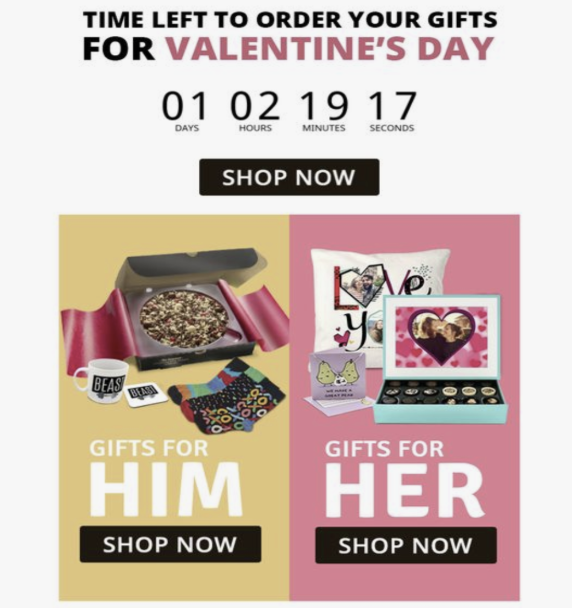
Time-Sensitive Incentives
Another option is to offer a time-sensitive incentive. Combining urgency with an incentive creates a win-win for your site and the shopper. By motivating the user to purchase while also allowing them to save money in the process, you set yourself up for increased conversions.
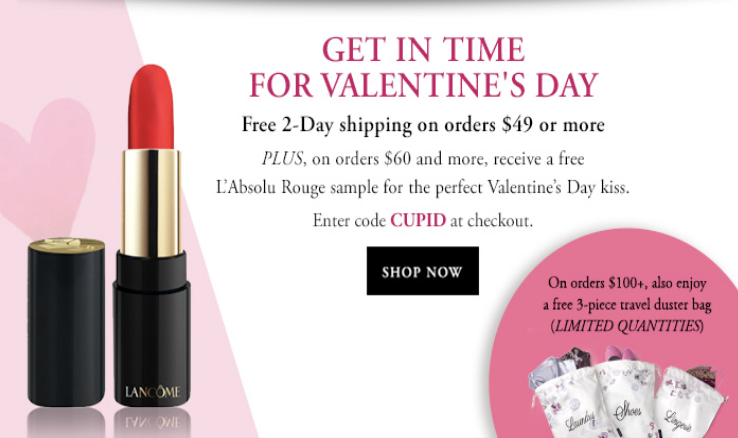
Low Stock Alerts
Another popular choice is low stock alerts. These are as simple as letting shoppers know when inventory of certain products is running low. If shoppers know that an item they’re considering could run out, they’re far more likely to purchase immediately. After all, if their first choice runs out, they have to spend time shopping for another gift.
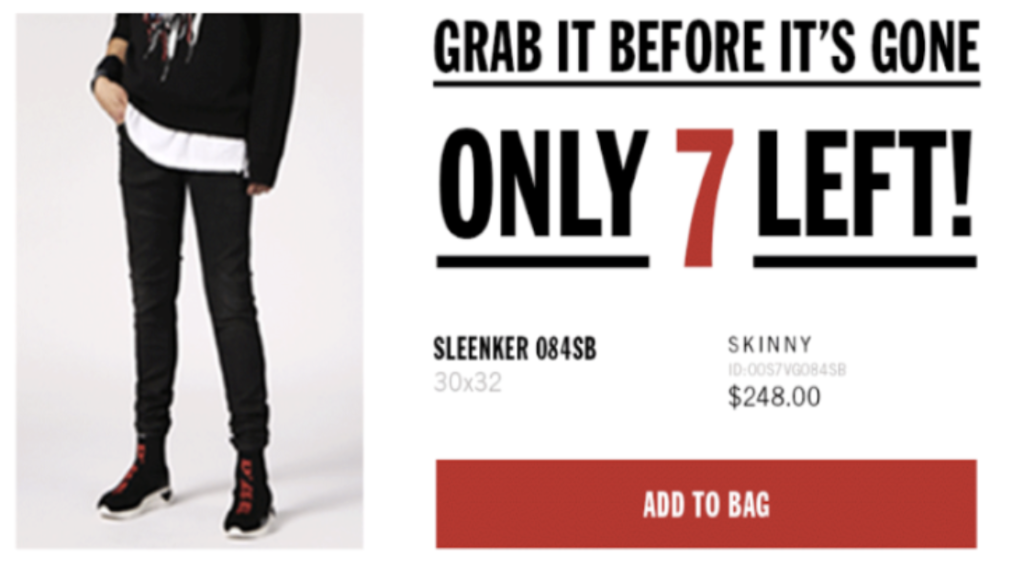
St. Patrick’s Day
Even though it’s not typically thought of as a major spending holiday, St. Patrick’s Day brings in an estimated $6 billion every year.
St. Patrick’s Day is all about being lucky. This makes it the perfect time to leverage the idea of winning or earning a deal, discount, or offer.
Gamification is the use of games and interactivity to increase engagement. When used properly, gamification results in higher engagement, longer site visits, and increased conversions.
How to Take Action
Try offering a gamified incentive through a simple on-site game. Gamification doesn’t have to be complicated or require extensive coding.
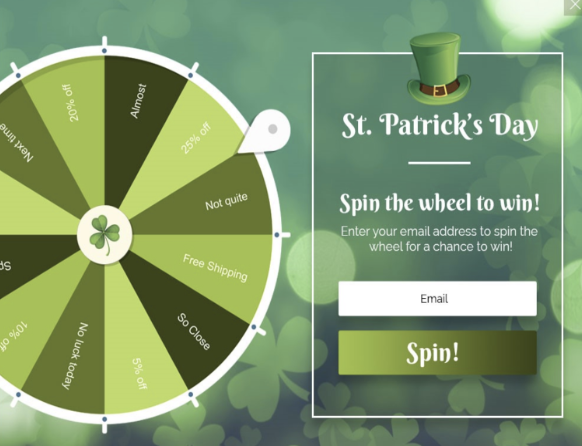
Part of the reason gamification is so effective is that winning an incentive is proven to make it feel more valuable to a consumer than having it handed to them. By gamifying incentives, you make the shopping experience exciting, fun and engaging, which leads to more clicks and more conversions.
This is Just a Preview
Looking for more? Download Upsellit’s Winter Seasonal Marketing Guide to unlock more conversion boosting strategies.
